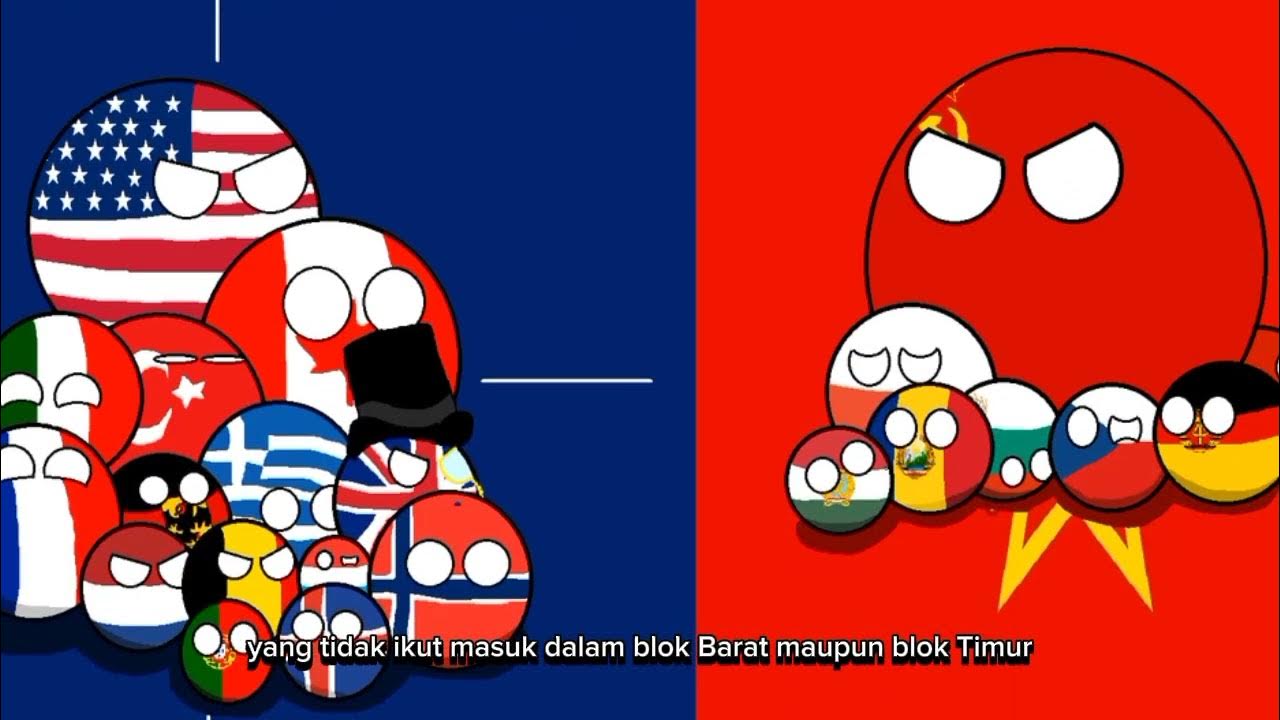Sejarah orde lama pada masa Pemerintahan Soekarno
Summary
TLDRThis script explores Indonesia's political system during the 'Old Order' era under President Soekarno, from 1945 to 1968. It details key transitions in governance, including the shift from a presidential system to a parliamentary system, and later, a guided democracy. The script highlights the challenges faced in crafting a new constitution, the establishment of cabinets, and the significant influence of the military and political factions. The period also saw fluctuating power dynamics, such as the 1959 Presidential Decree and the formation of large cabinets. Eventually, General Soeharto took power after the 1965 G30S coup.
Takeaways
- 😀 Indonesia's government system during the Old Order period (1945-1968) went through several transitions, including presidential, parliamentary, and guided democracy systems.
- 😀 The government system shifted from a presidential system to a parliamentary system between 1945 and 1950, with the President also functioning as part of the legislative body.
- 😀 The first post-independence cabinet was formed shortly after Indonesia's proclamation of independence in 1945, with Soekarno and Moh Hatta leading the country as President and Vice President.
- 😀 In the 1950-1959 period, Indonesia adopted a liberal democracy, which focused on liberal principles in politics and economics.
- 😀 During the liberal democracy era, the Indonesian Constitution of 1950 was implemented, and a Constituent Assembly was tasked with drafting a new constitution, which remained unfinished by 1959.
- 😀 On July 5, 1959, President Soekarno issued a presidential decree dissolving the Constituent Assembly and reinstating the 1945 Constitution.
- 😀 In the parliamentary system of 1950-1959, the Prime Minister was appointed by the President and was accountable to the People's Representative Council, leading to frequent cabinet changes.
- 😀 The guided democracy era, introduced by Soekarno in 1956, saw the creation of the largest cabinet in Indonesian history with 132 officials, known as the 'Dwikora Cabinet' or '100 Ministers Cabinet.'
- 😀 The Dwikora Cabinet included numerous supporters of Soekarno and the military, although some key figures were removed after the 1965 G30S/PKI incident.
- 😀 Between the nine cabinets formed during Soekarno's guided democracy era, the last two were led by General Soeharto, who eventually took power after the 1965 coup.
Q & A
What was the system of government in Indonesia during the Old Order period?
-During the Old Order period (1945-1968), Indonesia experienced several shifts in its government system, including presidential, parliamentary, liberal democracy, and guided democracy systems.
What was the significant change in the Indonesian government system from 1945 to 1950?
-From 1945 to 1950, Indonesia transitioned from a presidential system to a parliamentary system, where the President held dual functions, both as the executive body and as part of the legislative body.
What was the role of the Komite Nasional Indonesia Pusat (KNIP) in the early years after independence?
-Initially, the KNIP served as a presidential assistant, but it later became a legislative body with powers to determine the General Guidelines of State Policy (GBHN), which was traditionally the MPR's responsibility.
How was Indonesia's first cabinet formed after independence?
-Indonesia's first cabinet was formed two weeks after the proclamation of independence, with President Sukarno and Vice President Mohammad Hatta determining the cabinet's structure.
What was the function of the Prime Minister during the Liberal Democracy era (1950-1959)?
-During the Liberal Democracy era, the Prime Minister, elected by the President, was responsible for running the government and managing the cabinet, while also being accountable to the Komite Nasional Indonesia Pusat (KNIP) or the People's Representative Council.
Why were there frequent changes in the Indonesian cabinet during the Liberal Democracy era?
-Frequent changes occurred because the KNIP had the power to dismiss the cabinet if they were dissatisfied, often leading to new cabinets being formed at the President's request.
What prompted President Sukarno to issue the 1959 Presidential Decree?
-In 1959, President Sukarno issued the Presidential Decree after the Constituent Assembly failed to draft a new constitution, effectively dissolving the assembly and restoring the 1945 Constitution.
What is the significance of the 'Dwikora Cabinet' under Sukarno?
-The 'Dwikora Cabinet', also known as the '100 Ministers Cabinet', was notable for its large size, with 132 officials holding ministerial positions. This cabinet reflected Sukarno's efforts to consolidate support from various groups, including military factions.
How did the G30S/PKI event impact Sukarno's cabinet?
-After the G30S/PKI event, some of Sukarno's cabinet members, especially those associated with the PKI, no longer supported him. This led to changes in the cabinet's composition and the rise of General Suharto's influence.
How many cabinets were formed during the Guided Democracy period?
-During the Guided Democracy period, nine cabinets were formed, with the last two being led by General Suharto, who eventually took control of the government after the G30S/PKI event.
Outlines

This section is available to paid users only. Please upgrade to access this part.
Upgrade NowMindmap

This section is available to paid users only. Please upgrade to access this part.
Upgrade NowKeywords

This section is available to paid users only. Please upgrade to access this part.
Upgrade NowHighlights

This section is available to paid users only. Please upgrade to access this part.
Upgrade NowTranscripts

This section is available to paid users only. Please upgrade to access this part.
Upgrade NowBrowse More Related Video

Sistem Pemerintahan Masa Orde Lama, Orde Baru, dan Reformasi di Indonesia

Sejarah Masa Orde Lama

pembangunan Indonesia dari masa ke masa

Masa Transisi Menuju Orde Baru tahun 1966-1967

Tantangan Pembangunan Indonesia Dari Masa Ke Masa : Transformasi Perjalanan dan Harapan plus LKPD

Perbedaan kondisi politik pada masa pemerintahan orde lama, orde baru, dan reformasi
5.0 / 5 (0 votes)